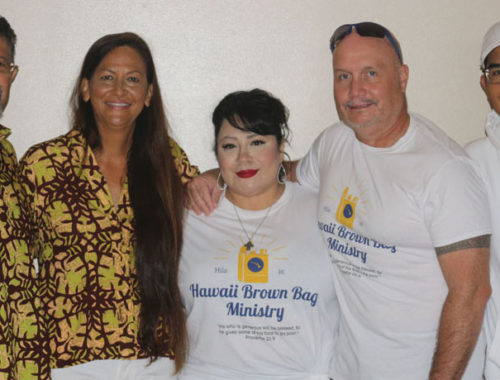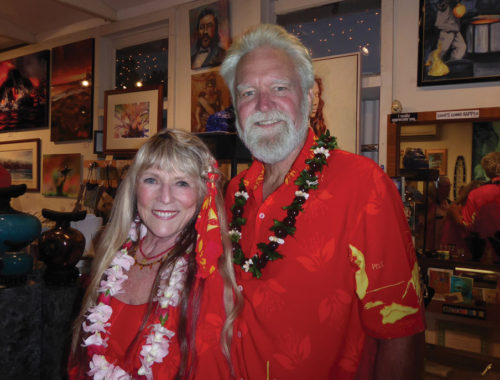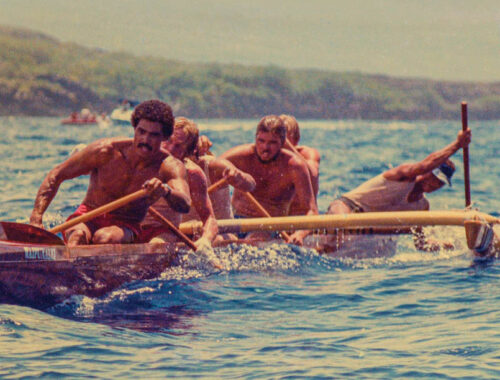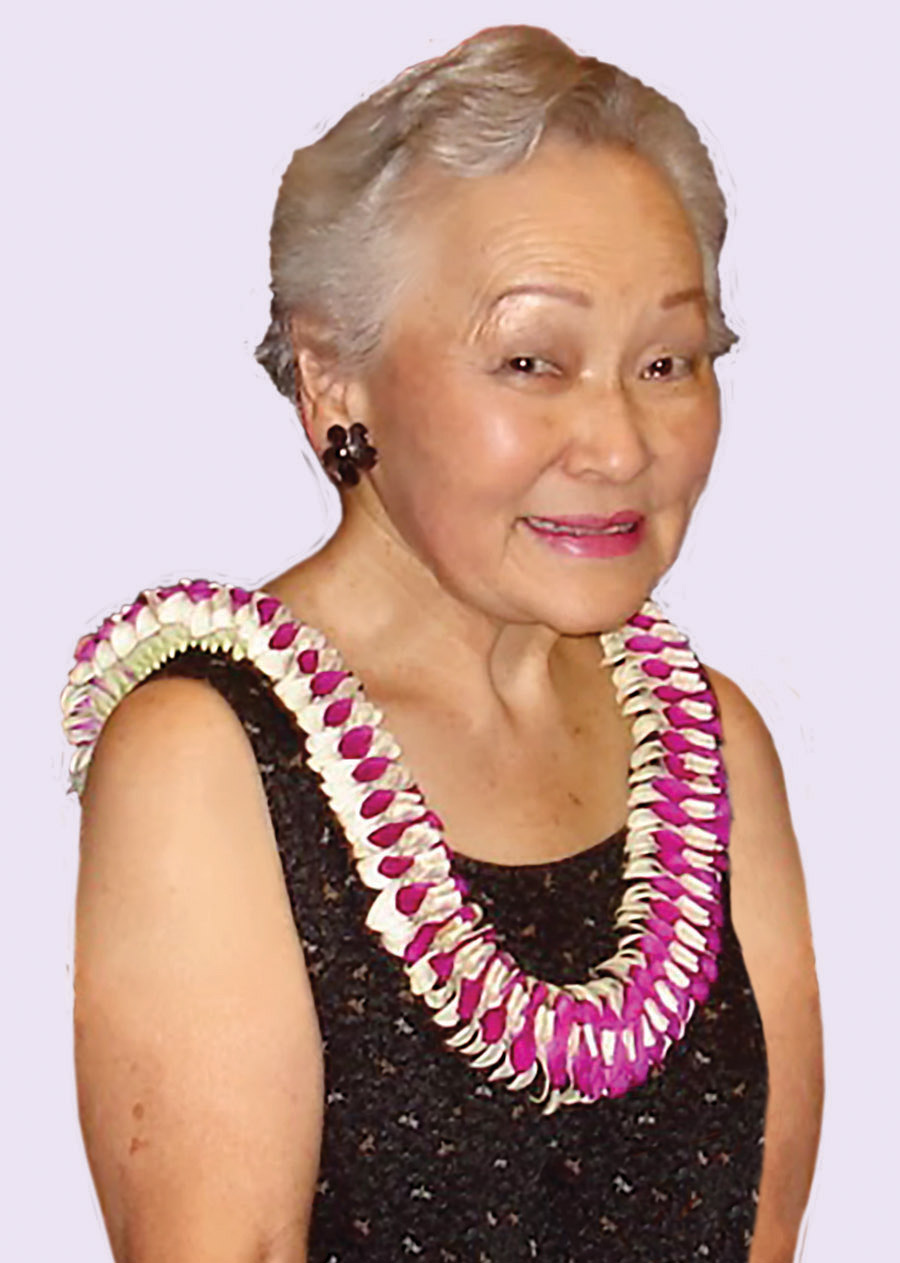
One of Hilo’s Unsung Heroes: Mary Matayoshi
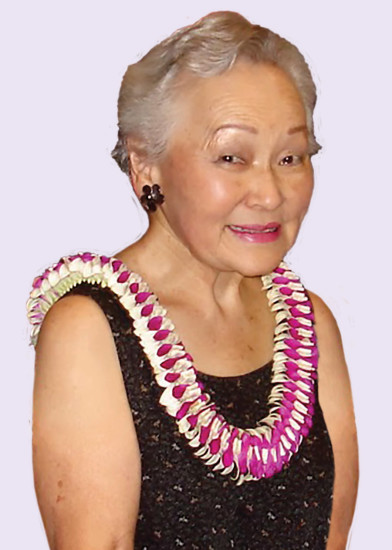
By Denise Laitinen
A staunch supporter of education, Mary Matayoshi has created programs that have benefited generations of Hawai‘i Island residents. Her work has led to educational opportunities for thousands of people, however her name is not as well known as one would think.
An educator, businesswoman, and community catalyst, Mary Matayoshi’s career is impressive. She created the program that went on to become the College of Continuing Education and Community Service (CCECS) for the University of Hawai‘i at Hilo, owned a bookstore, and was instrumental in creating teacher training programs for the Peace Corps here. All of which she accomplished while raising four children and serving as Hawai‘i Island’s longest-running first lady—her husband Herbert Matayoshi was Mayor of Hawai‘i County from 1974–1984.
Mary’s father instilled her love of education and her commitment to community service at an early age, and she passed it down to her four children. Daughter Kathryn Matayoshi is the former superintendent for the Hawai‘i State Department of Education. Son Ronald recently retired as the Director of International Programs and Director of Practicum at the University of Hawai‘i at Manoa School of Social Work. Son Eric served as the chief of General Surgery for Kaiser Permanente in Hawai‘i before accepting a position at the Cleveland Clinic in Abu Dhabi in the Middle East, while their third son, Jerold, is a prominent civil litigation lawyer in Honolulu.
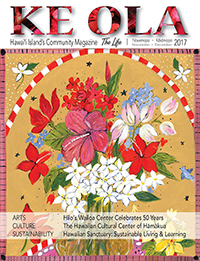
It is easy to assume that Mary’s life is a gilded one with success at every turn. However, that success was built on a foundation of hard work and determination. Mary’s father, Bumpachi Fujioka, immigrated to the United States from Japan in 1903, arriving in San Francisco broke and unable to understand English. On his first night in America, he was helped by a Presbyterian minister at a local YMCA. The kindness shown to him by that minister left a deep impression on her father. He became a devout Christian, learned English, became a US citizen, and graduated from Indiana University and went on to receive his final dental surgery degree from the Ohio College of Dental Surgery which is now Cincinnati University.
“My father had the mentality of helping others because he had been helped by a Presbyterian minister when he first stayed at the YMCA in San Francisco,” says Mary.
Living in the Midwest after dental college, Mary says her father “came to Hawai‘i around 1916 after seeing an advertisement that dentists were needed in Hawai‘i.” He set up shop in Hilo, at the corner of Kamehameha Ave. and Kalakaua St., providing dental services to mainly immigrants. Mary’s brother Paul Fujioka also went on to become a dentist, as did Paul’s son Craig, who maintains a practice today in Hilo.
Mary’s mother, Kosei (Takasaka) Fujioka, who was also from Japan, converted to Christianity after marrying her father. Mary says the entire family was active in the Church of the Holy Cross for many years. “My parents were very strict Christians. We read the Bible every morning at breakfast and I was not allowed to go to bon dances with my friends.”
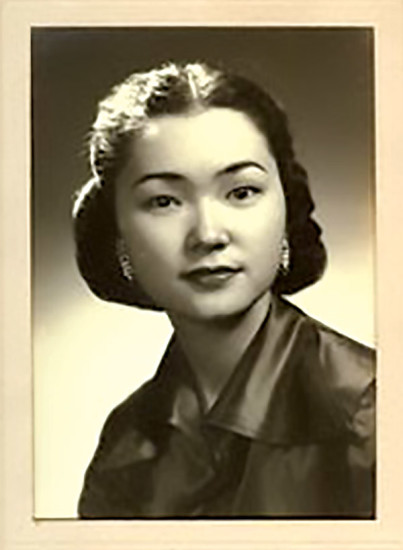
Mary and her five brothers and sisters grew up in a Hilo that was much different than today. Living in a house her father built on Kekuanaoa St., she and her siblings attended Standard School in Hilo. Long since closed, it was the closest thing Hilo had to a private school at the time, and was primarily for Caucasian students and the children of Hilo’s professional and business leaders.
Even at a young age, Mary was guided by a desire for community service and was active in the church as well as president of the local Girl Reserves, of the YWCA and the church’s Pilgrim Fellowship for Youth.
Graduating high school in 1948, Mary went on to attend Grinnell College in Iowa. She started dating Herbert Matayoshi, a longtime family friend, after high school and the two became engaged her junior year of college. Mary took on extra course work to graduate early and teach for a semester in Iowa before Herbert pursued graduate studies in business and finance at Temple University and Mary worked as a typist.
In 1955, the couple moved back to Hilo with their two young sons. Herbert finished his studies at UH Manoa and opened a stock brokerage, setting up office on Kamehameha Ave. The couple lived with Mary’s in-laws, the Matayoshis, in a residence adjacent to Matayoshi Hospital.
The same year the Matayoshis returned to Hilo, the University of Hawai‘i opened its brand new Hilo campus on Lanikaula St. Originally called the Hilo Program when it started in 1947 as an extension of UH Manoa, classes were held in the former Hilo Boarding School on Haili St. until the new campus was built. Mary was friends with many of the top officials at the UH Manoa campus and she would eventually spend a significant portion of her career working at the UH Hilo campus.
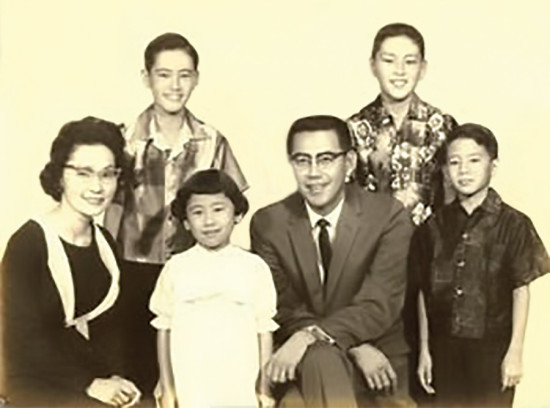
As the fledgling University of Hawai‘i, Hilo branch (as it was called at the time) was growing, so too was Mary’s family. She and Herbert now had four children and she was working as a teacher. Mary added entrepreneur to her list of job titles when she opened a bookstore in downtown Hilo called the Book Nook. “My sister Elizabeth talked me into opening a bookstore because at the time there were no bookstores in Hilo,” says Mary.
One day a high school friend of hers, James Miller, who had become a university professor on the mainland, stopped by the store and asked Mary if she could help him with some Peace Corps programs. That fateful encounter led Mary to work for the Peace Corps for seven years. She developed training programs for teachers and community development agents so that the Peace Corps volunteers had experience and gained confidence in creating programs in their overseas placements. As part of her duties, Mary traveled extensively throughout Southeast Asia, meeting with top education officials in Thailand, the Philippines, Malaysia, and elsewhere, in order to better prepare Peace Corps teachers for work in those countries.
“Peace Corps trainees were altruistic college graduates who wanted to serve our country overseas,” says Mary. “Already with college credentials, all they needed was to be acclimated to teaching methodologies and be accepting of other cultures,” explains Mary. She trained teachers in 10 to 12 weeks, at a time when conventional wisdom said five years was needed to train teachers. “The Peace Corps volunteers were educated and smart. They already had masters and doctorate degrees,” says Mary. “All they needed was help in teaching methodologies and experience living among other cultures.”

In order to help the Peace Corps volunteers gain teaching experience, Mary was featured in a story on the front page of the Hawaii Tribune Herald offering free tutoring to area children whose parents were willing to have their kids taught by Peace Corps trainees. The program was so successful that Mary and the Peace Corps volunteers wound up establishing a summer school program for local kids.
“The 18 math volunteer teachers I had were going to have the same experience once they arrived in the Philippines. They got the experience of setting up and running a school in Hilo before they traveled to the another country to do the same thing.”
“I tell ya, I had more fun [doing that program.] It was a very creative situation. There was nothing set in stone, so we could all innovate and create.” As part of her Peace Corps work, Mary brought nationally-known educational leaders to Hilo as resources for her education programs.
During this time, Mary’s husband Herbert was approached about running for political office. Legendary Hilo businessman William “Doc” Hill, at the time a leading Republican senator in Hawai‘i, encouraged Herbert to join the Republican Party. Mary recalls how her husband read the materials from each political party, studied each of their platforms, and said to her, “I’m a Democrat.”
Herbert successfully ran and was elected to the Hawai‘i County Board of Supervisors in 1962. He was then elected to the newly formed Hawai‘i County Council in 1968 and remained in office until he was elected Hawai‘i County’s third Mayor in 1974, a position he held for 10 years. To this day, Herbert Matayoshi has the longest continuous tenure of any elected mayor in Hawai‘i County.
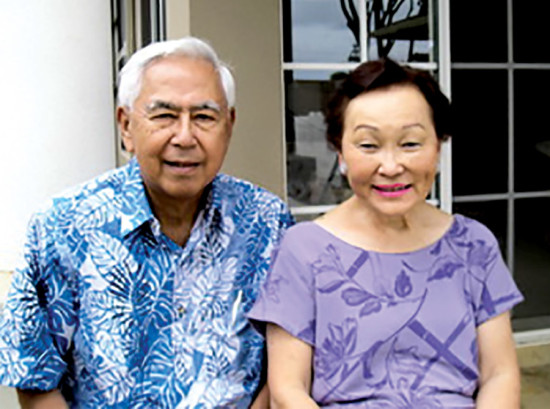
Mary recalls that while she helped her husband campaign, she didn’t get too involved in his political career. “I didn’t interfere with his political life; he had good people at the office.” Mary would help out from time to time as first lady, often covering events her husband could not attend.
While Herbert held office, Mary continued running various education programs. Paul Miwa, who was named UH Hilo’s first chancellor in 1970, was familiar with Mary’s work long before he moved to Hawai‘i Island. He had visited Hilo to see her Peace Corps training programs first hand during his tenure with the New York City’s mayor’s office. When he became chancellor of UH Hilo, he asked Mary to start the Center of Continuing Education and Community Service, which later became the College of Continuing Education and Community Service (CCECS).
Mary built the CCECS program from scratch, growing it to more than 28 employees within a year, all with no budget. Mary sought out and wrote grants to get funding from different sources. A family friend, Dr. Shunzo Sakamaki, who was in charge of the largest summer school program in the country shared great mainland lecturers to teach at Hiloʻs fledging continuing education program.
Mary would go on to work for UH Hilo for 15 years, until 1986. By that time Herbert was no longer mayor, and the couple moved to O‘ahu, where Mary headed then-governor Ben Cayetano’s State Volunteer Service Office. In 2002, she went on to found the Volunteer Resource Center of Hawai‘i, instructing volunteer leaders in different communities.

Having spent more than 60 years tirelessly training educators and teaching others, Mary is retired and spends her time with family, which now includes 11 grandchildren and 3 great-grandchildren, in Honolulu and Hilo. She still enjoys traveling, and recently visited her son Eric in Abu Dhabi.
Generations of students have, and will continue to benefit from all the various educational training programs Mary created over the decades. Hers is a legacy of community service, volunteerism, and helping others, and we owe her a debt of gratitude. ❖
All photos courtsey of the Matayoshi Family.
